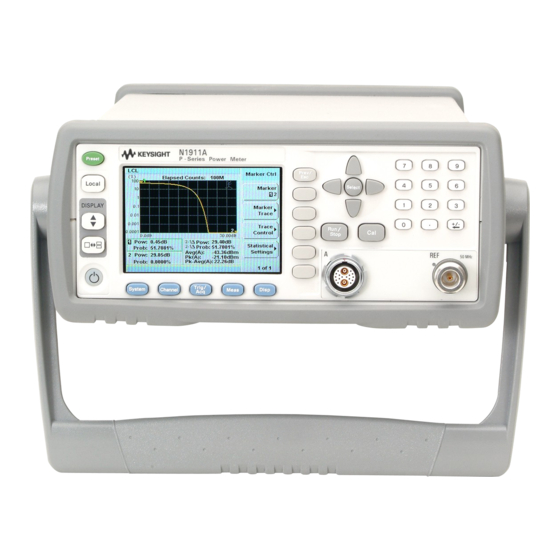
Keysight N1911A User Manual
P-series power meters
Hide thumbs
Also See for N1911A:
- Programming manual (771 pages) ,
- Installation manual (57 pages) ,
- Configuration manual (6 pages)
Table of Contents
Advertisement
Quick Links
Advertisement
Table of Contents










Need help?
Do you have a question about the N1911A and is the answer not in the manual?
Questions and answers